Systematic Boolean Satisfiability Programming in Radial Basis Function Neural Network
Abstract
1. Introduction
2. Satisfiability Programming in Artificial Neural Network
2.1. 2 Satisfiability Representation
- (a)
- Consist of a set of m variables: .
- (b)
- A set of literals. A literal is a variable or a negation of a variable.
- (c)
- A set of n distinct clauses: . Each clause consists of only literals combined by only logical AND.
2.2. 2 Satisfiability in Radial Basis Neural Network
2.3. Satisfiability Programming in Hopfield Neural Network
3. Experimental Setup
4. Result and Discussion
5. Conclusions
Author Contributions
Funding
Conflicts of Interest
References
- Moody, J.; Darken, C.J. Fast learning in networks of locally-tuned processing units. Neural Comput. 1989, 1, 281–294. [Google Scholar] [CrossRef]
- Celikoglu, H.B. Application of radial basis function and generalized regression neural networks in non-linear utility function specification for travel mode choice modelling. Math. Comput. Model. 2006, 44, 640–658. [Google Scholar] [CrossRef]
- Guo, Z.; Wang, H.; Yang, J.; Miller, D.J. A stock market forecasting model combining two-directional two-dimensional principal component analysis and radial basis function neural network. PLoS ONE 2015, 10, e0122385. [Google Scholar] [CrossRef] [PubMed]
- Roshani, G.H.; Nazemi, E.; Roshani, M.M. Intelligent recognition of gas-oil-water three-phase flow regime and determination of volume fraction using radial basis function. Flow Meas. Instrum. 2017, 54, 39–45. [Google Scholar] [CrossRef]
- Hjouji, A.; El-Mekkaoui, J.; Jourhmane, M.; Qjidaa, H.; Bouikhalene, B. Image retrieval and classication using shifted legendre invariant moments and radial basis functions neural networks. Procedia Comput. Sci. 2019, 148, 154–163. [Google Scholar] [CrossRef]
- Dash, C.S.K.; Behera, A.K.; Dehuri, S.; Cho, S.B. Building a novel classifier based on teaching learning based optimization and radial basis function neural networks for non-imputed database with irrelevant features. Appl. Comput. Inform. 2019. [Google Scholar] [CrossRef]
- Park, J.; Sandberg, I.W. Universal approximation using radial-basis-function networks. Neural Comput. 1991, 3, 246–257. [Google Scholar] [CrossRef]
- Sing, J.K.; Basu, D.K.; Nasipuri, M.; Kundu, M. Improved k-means algorithm in the design of RBF neural networks. In Proceedings of the TENCON 2003 Conference on Convergent Technologies for Asia-Pacific Region, Bangalore, India, 15–17 October 2003; pp. 841–845. [Google Scholar]
- Gholami, A.; Bonakdari, H.; Zaji, A.H.; Fenjan, S.A.; Akhtari, A.A. New radial basis function network method based on decision trees to predict flow variables in a curved channel. Neural Comput. Appl. 2018, 30, 2771–2785. [Google Scholar] [CrossRef]
- Jafrasteh, B.; Fathianpour, N. A hybrid simultaneous perturbation artificial bee colony and back-propagation algorithm for training a local linear radial basis neural network on ore grade estimation. Neurocomputing 2017, 235, 217–227. [Google Scholar] [CrossRef]
- Abdullah, W.A.T.W. Logic programming on a neural network. Int. J. Intell. Syst. 1992, 7, 513–519. [Google Scholar] [CrossRef]
- Sathasivam, S. Upgrading logic programming in Hopfield network. Sains Malays. 2010, 39, 115–118. [Google Scholar]
- Yang, J.; Wang, L.; Wang, Y.; Gou, T. A novel memristive Hopfield neural network with application in associative memory. Neurocomputing 2017, 227, 142–148. [Google Scholar] [CrossRef]
- Sathasivam, S. Learning rules comparison in Neuro-Symbolic integration. Int. J. Appl. Phys. Math. 2011, 1, 129–132. [Google Scholar] [CrossRef]
- Yang, G.; Wu, S.; Jin, Q.; Xu, J. A hybrid approach based on stochastic competitive Hopfield neural network and efficient genetic algorithm for frequency assignment problem. Appl. Soft Comput. 2016, 39, 104–116. [Google Scholar] [CrossRef]
- Mansor, M.A.; Kasihmuddin, M.S.M.; Sathasivam, S. Enhanced Hopfield network for pattern satisfiability optimization. Int. J. Intell. Syst. Appl. 2016, 8, 27. [Google Scholar] [CrossRef]
- Sathasivam, S.; Pei, F.N. Developing agent based modeling for doing logic programming in hopfield network. Appl. Math. Sci. 2013, 7, 23–35. [Google Scholar]
- Mansor, M.A.; Kasihmuddin, M.S.M.; Sathasivam, S. VLSI circuit configuration using satisfiability logic in Hopfield network. Int. J. Intell. Syst. Appl. 2016, 8, 22–29. [Google Scholar] [CrossRef]
- Sathasivam, S.; Abdullah, W.A.T.W. Logic mining in neural network: Reverse analysis method. Computing 2011, 91, 119–133. [Google Scholar] [CrossRef]
- Sathasivam, S.; Hamadneh, N.; Choon, O.H. Comparing neural networks: Hopfield network and RBF network. Appl. Math. Sci. 2011, 5, 3439–3452. [Google Scholar]
- Hamadneh, N.; Sathasivam, S.; Choon, O.H. Higher order logic programming in radial basis function neural network. Appl. Math. Sci. 2012, 6, 115–127. [Google Scholar]
- Hamadneh, N.; Sathasivam, S.; Tilahun, S.L.; Choon, O.H. Learning logic programming in radial basis function network via genetic algorithm. J. Appl. Sci. 2012, 12, 840–847. [Google Scholar] [CrossRef]
- Glaßer, C.; Jonsson, P.; Martin, B. Circuit satisfiability and constraint satisfaction around Skolem Arithmetic. Theor. Comput. Sci. 2017, 703, 18–36. [Google Scholar] [CrossRef]
- Jensen, L.S.; Kaufmann, I.; Larsen, K.G.; Nielsen, S.M.; Srba, J. Model checking and synthesis for branching multi-weighted logics. J. Log. Algebraic Methods Program. 2019, 105, 28–46. [Google Scholar] [CrossRef]
- Pearce, B.; Kurz, M.E.; Phelan, K.; Summers, J.; Schulte, J.; Dieminger, W.; Funk, K. Configuration management through satisfiability. Procedia CIRP 2016, 44, 204–209. [Google Scholar] [CrossRef]
- Mansor, M.A.; Sathasivam, S. Accelerating activation function for 3-satisfiability logic programming. Int. J. Intell. Syst. Appl. 2016, 8, 44. [Google Scholar] [CrossRef]
- Kasihmuddin, M.S.M.; Mansor, M.A.; Sathasivam, S. Hybrid genetic algorithm in the Hopfield network for logic satisfiability problem. Pertanika J. Sci. Technol. 2017, 25, 139. [Google Scholar]
- Kasihmuddin, M.S.M.; Mansor, M.A.; Sathasivam, S. Satisfiability based reverse analysis method in diabetes detection. In Proceedings of the 25th National Symposium on Mathematical Sciences (SKSM25), Pahang, Malaysia, 27–29 August 2017; p. 020020. [Google Scholar]
- Kasihmuddin, M.S.M.; Mansor, M.; Sathasivam, S. Robust artificial bee colony in the Hopfield network for 2-satisfiability problem. Pertanika J. Sci. Technol. 2017, 25, 453–468. [Google Scholar]
- Kasihmuddin, M.S.M.; Mansor, M.A.; Basir, M.F.M.; Sathasivam, S. Discrete Mutation Hopfield Neural Network in Propositional Satisfiability. Mathematics 2019, 7, 1133. [Google Scholar] [CrossRef]
- Gramm, J.; Hirsch, E.A.; Niedermeier, R.; Rossmanith, P. Worst-case upper bounds for max-2-sat with an application to max-cut. Discret. Appl. Math. 2003, 130, 139–155. [Google Scholar] [CrossRef][Green Version]
- Avis, D.; Tiwary, H.R. Compact linear programs for 2SAT. Eur. J. Comb. 2019, 80, 17–22. [Google Scholar] [CrossRef]
- Fürer, M.; Kasiviswanathan, S.P. Algorithms for counting 2-SAT solutions and colorings with applications. In Proceedings of the International Conference on Algorithmic Applications in Management, Portland, OR, USA, 6–8 June 2007; pp. 47–57. [Google Scholar]
- Sheta, A.F.; De Jong, K. Time-series forecasting using GA-tuned radial basis functions. Inf. Sci. 2001, 133, 221–228. [Google Scholar] [CrossRef]
- Chaiyaratana, N.; Zalzala, A.M.S. Evolving hybrid RBF-MLP networks using combined genetic/unsupervised/supervised learning. In Proceedings of the UKACC International Conference on Control (CONTROL ’98), Swansea, UK, 1–4 September 1998; pp. 330–335. [Google Scholar]
- Sathasivam, S. Improving Logic Programming in Hopfield Network with Sign Constrained. In Proceedings of the International Conference on Computer Technology and Development, Kota Kinabalu, Malaysia, 13–15 November 2009; pp. 161–164. [Google Scholar]
- Hamadneh, N.; Sathasivam, S.; Choon, O.H. Computing single step operators of logic programming in radial basis function neural networks. In Proceedings of the 21st National Symposium on Mathematical Sciences (SKSM21), Penang, Malaysia, 6–8 August 2013; pp. 458–463. [Google Scholar]
- Hopfield, J.J.; Tank, D.W. “Neural” computation of decisions in optimization problems. Biol. Cybern. 1985, 52, 141–152. [Google Scholar] [PubMed]
- Cantini, L.; Caselle, M. Hope4Genes: A Hopfield-like class prediction algorithm for transcriptomic data. Sci. Rep. 2019, 9, 1–9. [Google Scholar] [CrossRef] [PubMed]
- Sathasivam, S.; Wan Abdullah, W.A.T. Logic learning in Hopfield Networks. Mod. Appl. Sci. 2008, 2, 57–63. [Google Scholar] [CrossRef]
- Dahllöf, V.; Jonsson, P.; Wahlström, M. Counting models for 2SAT and 3SAT formulae. Theor. Comput. Sci. 2005, 332, 265–291. [Google Scholar] [CrossRef][Green Version]
- Hopfield, J.J. Neuron with graded response have computational properties like those of two-state neurons. Proc. Natl. Acad. Sci. USA 1984, 81, 3088–3092. [Google Scholar] [CrossRef]
- Paul, A.; Poloczek, M.; Williamson, D.P. Simple approximation algorithms for balanced MAX 2SAT. Algorithmica 2018, 80, 995–1012. [Google Scholar] [CrossRef]
- Li, C.M.; Zhu, Z.; Manyà, F.; Simon, L. Optimizing with minimum satisfiability. Artif. Intell. 2012, 190, 32–44. [Google Scholar] [CrossRef]
- Karaboga, D.; Basturk, B. Artificial Bee Colony (ABC) optimization algorithm for solving constrained optimization problems. In Proceedings of the 12th International Fuzzy Systems Association World Congress (IFSA 2007), Cancun, Mexico, 18–21 June 2007; pp. 789–798. [Google Scholar]
- Emary, E.; Zawbaa, H.M.; Hassanien, A.E. Binary grey wolf optimization approaches for feature selection. Neurocomputing 2016, 172, 371–381. [Google Scholar] [CrossRef]
- Koppen, M.; Wolpert, D.H.; Macready, W.G. Remarks on a recent paper on the “no free lunch”. IEEE Trans. Evolut. Comput. 2001, 5, 295–296. [Google Scholar] [CrossRef]
- Poria, S.; Cambria, E.; Gelbukh, A. Aspect extraction for opinion mining with a deep convolutional neural network. Knowl. Based Syst. 2016, 108, 42–49. [Google Scholar] [CrossRef]
- Ricci-Tersenghi, F.; Weigt, M.; Zecchina, R. Simplest random k-satisfiability problem. Phys. Rev. E 2001, 63, 026702. [Google Scholar] [CrossRef] [PubMed]
- Xing, Z.; Zhang, W. MaxSolver: An efficient exact algorithm for (weighted) maximum satisfiability. Artif. Intell. 2005, 164, 47–80. [Google Scholar] [CrossRef]
- Kohli, R.; Krishnamurti, R.; Mirchandani, P. The minimum satisfiability problem. SIAM J. Discret. Math. 1994, 7, 275–283. [Google Scholar] [CrossRef]
- Mikaeil, R.; Ozcelik, Y.; Ataei, M.; Shaffiee, H.S. Application of harmony search algorithm to evaluate performance of diamond wire saw. J. Min. Environ. 2019, 10, 27–36. [Google Scholar]
- Mishra, M.; Barman, S.K.; Maity, D.; Maiti, D.K. Ant lion optimisation algorithm for structural damage detection using vibration data. J. Civ. Struct. Health Monit. 2019, 9, 117–136. [Google Scholar] [CrossRef]
- Nabil, E. A modified flower pollination algorithm for global optimization. Expert Syst. Appl. 2016, 57, 192–203. [Google Scholar] [CrossRef]
- Allawi, Z.T.; Ibraheem, I.K.; Humaidi, A.J. Fine-tuning meta-heuristic algorithm for global optimization. Processes 2019, 7, 657. [Google Scholar] [CrossRef]
- Zhao, Y.; Liao, C.; Qin, Z.; Yang, K. Using PSO algorithm to compensate power loss due to the aeroelastic effect of the wind turbine blade. Processes 2019, 7, 633. [Google Scholar] [CrossRef]
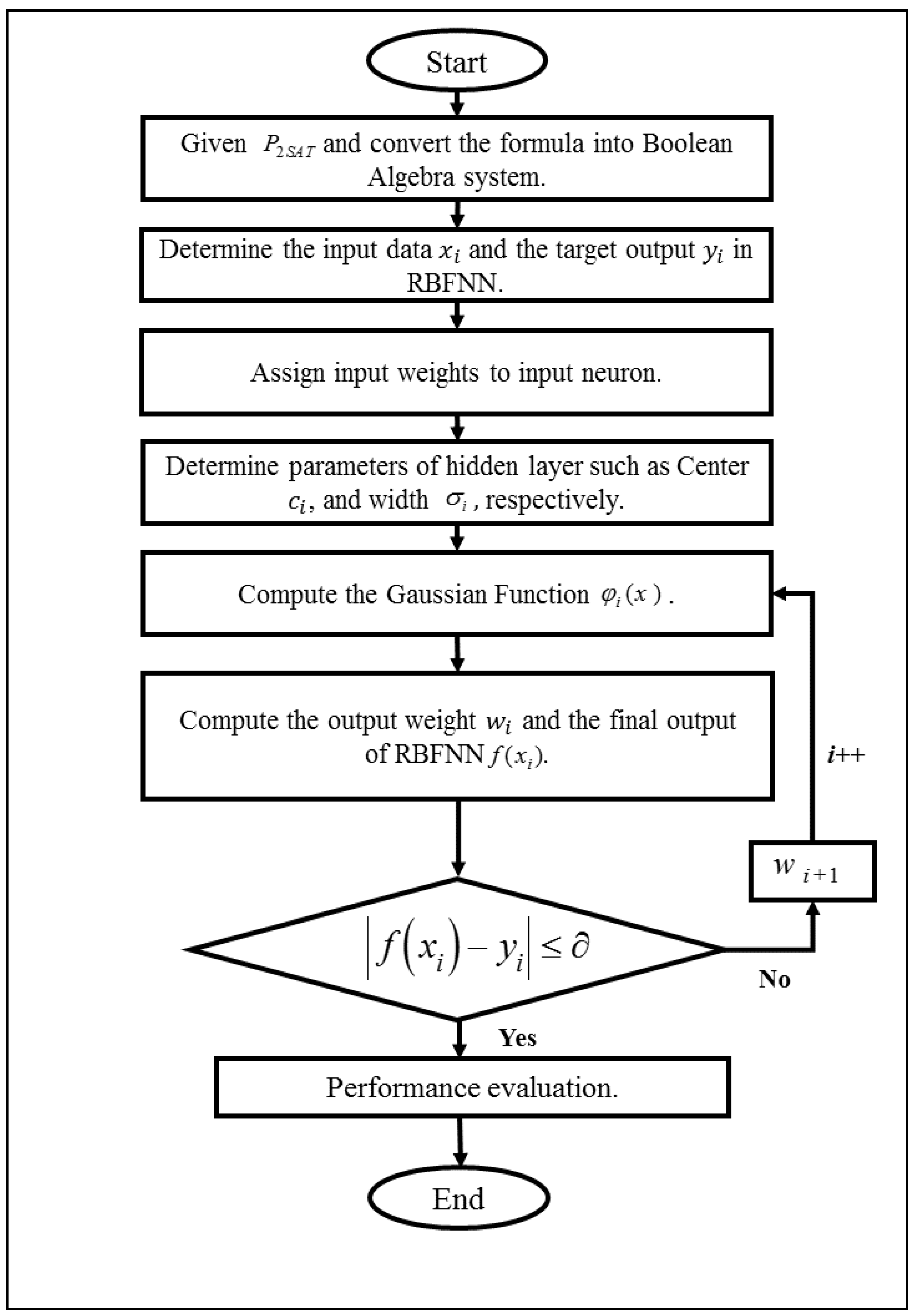
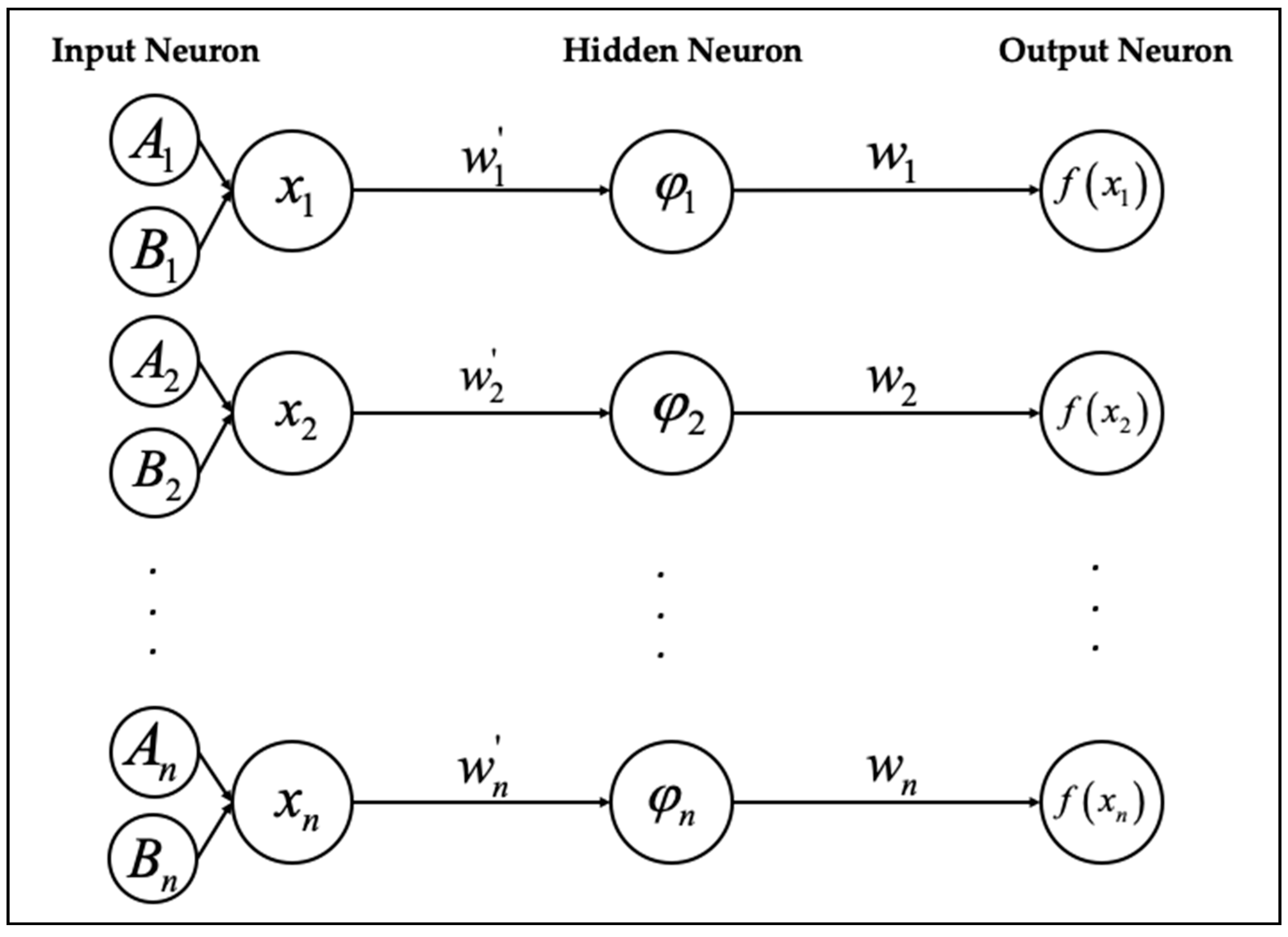
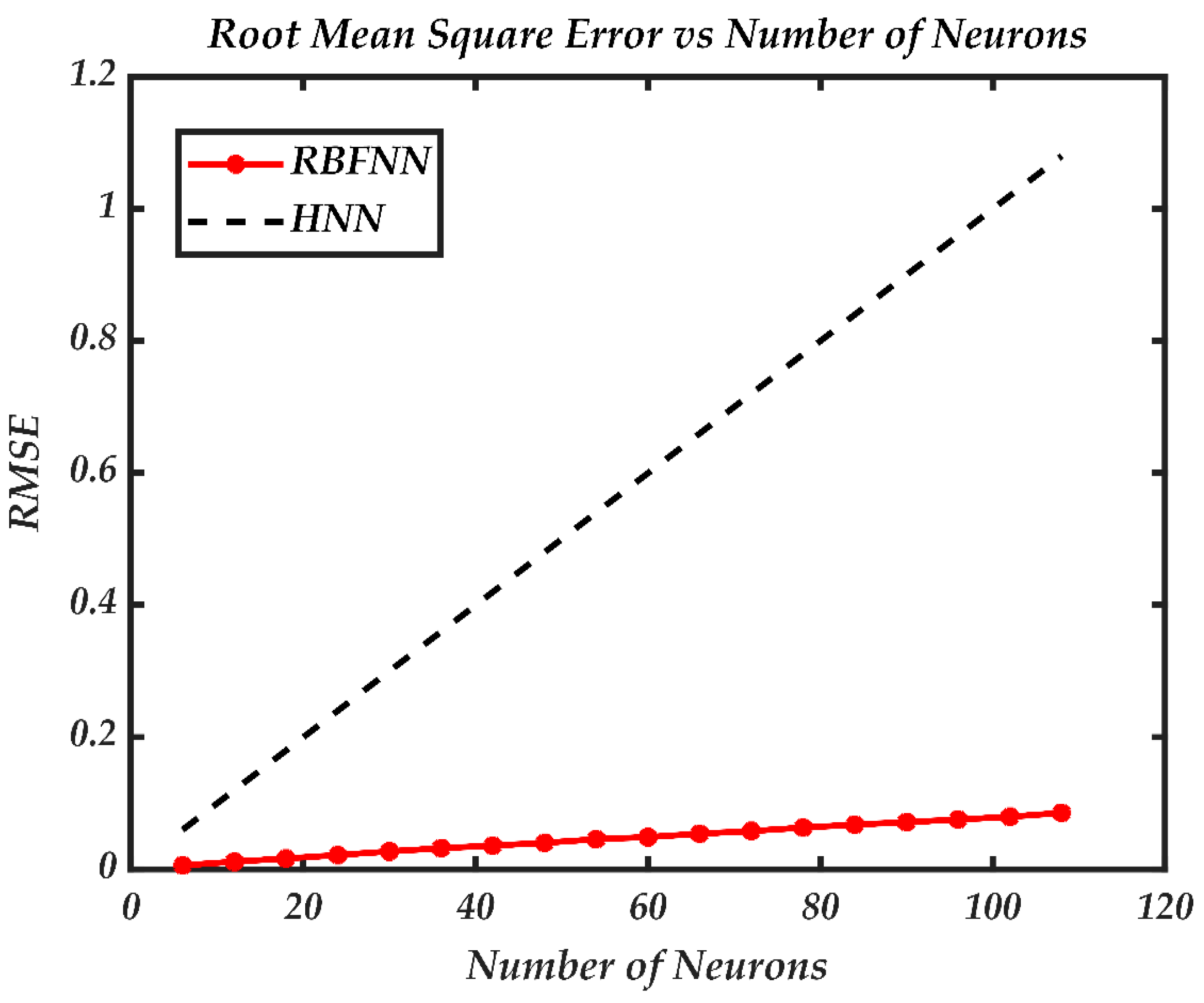
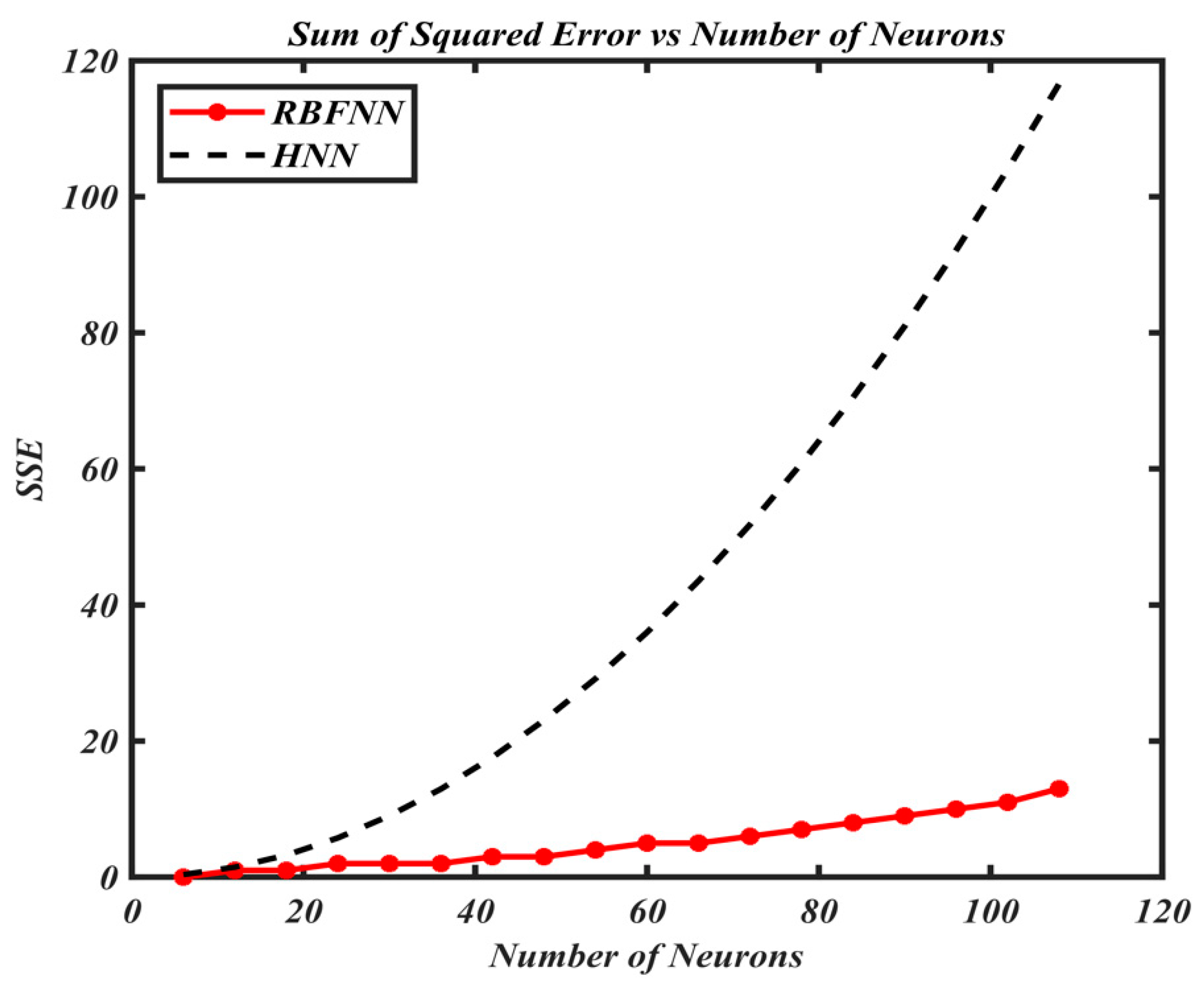
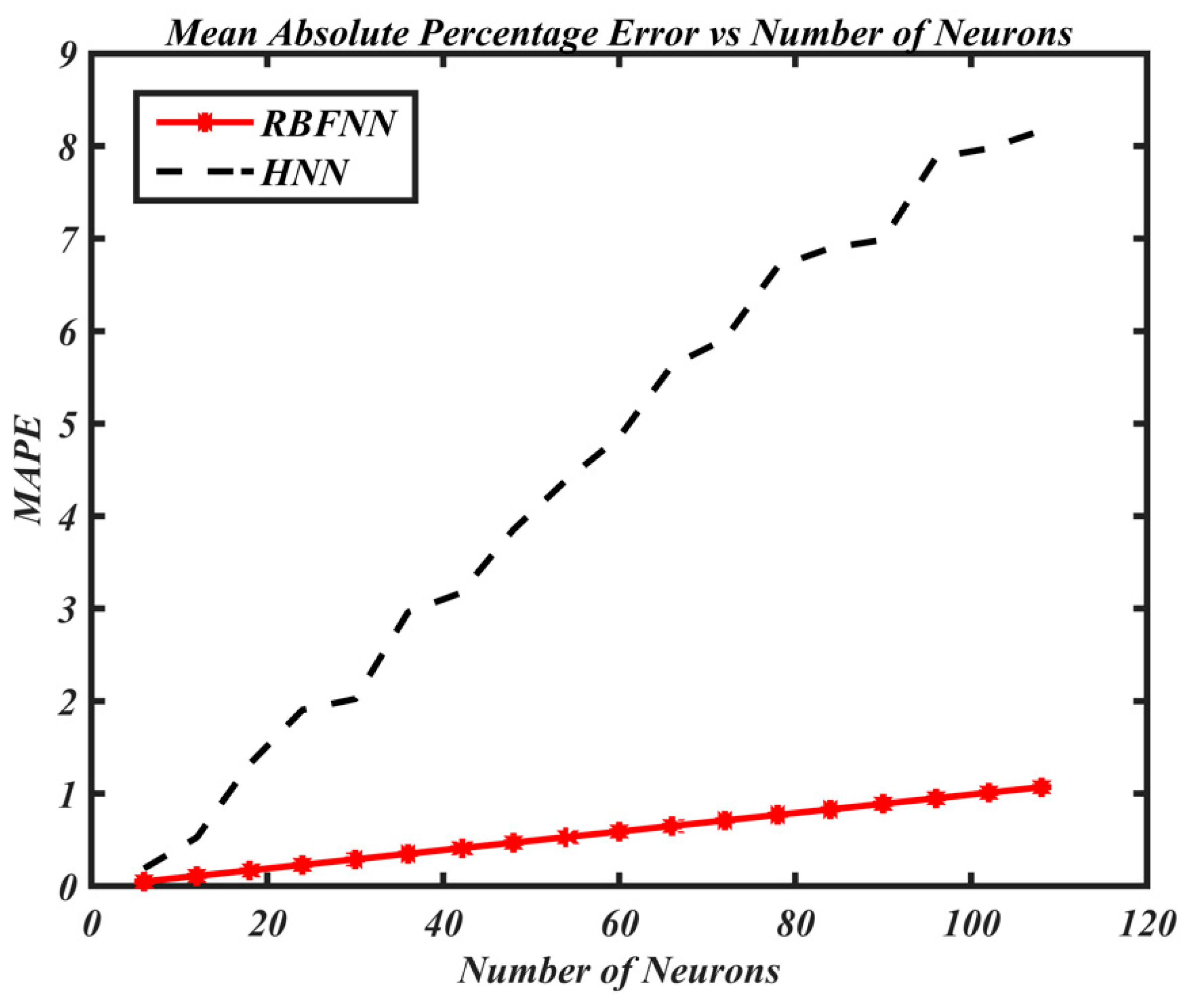
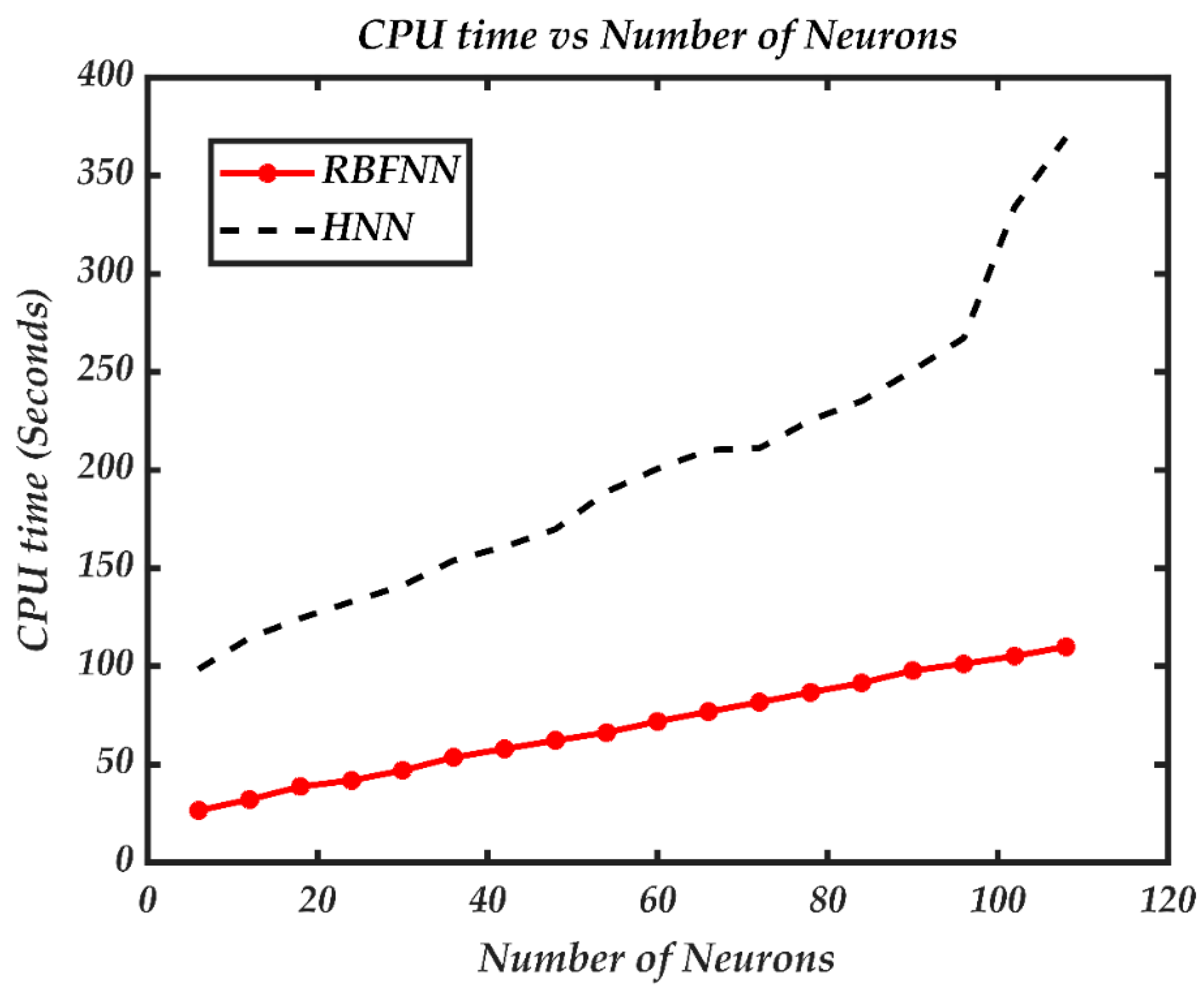
| Clause | |||
| DNF | |||
| Input data form | |||
| Input data in the training set | 0 1 1 2 | −1 0 0 1 | −1 0 0 1 |
| TheTarget Output data | 0 1 1 1 | 0 1 1 1 | 0 1 1 1 |
| Parameter | Parameter Value |
|---|---|
| Neuron Combination | 100 |
| Tolerance Value | 0.001 |
| Number of Learning Cycle | 100 |
| No_Neuron String | 100 |
| Input data | |
| No_Chromosomes | 100 |
| Generation | 1000 |
| Selection_Rate | 0.1 |
| Mutation_Rate | 0.01 |
| Crossover_Rate | 0.9 |
© 2020 by the authors. Licensee MDPI, Basel, Switzerland. This article is an open access article distributed under the terms and conditions of the Creative Commons Attribution (CC BY) license (http://creativecommons.org/licenses/by/4.0/).
Share and Cite
Mansor, M.A.; Mohd Jamaludin, S.Z.; Mohd Kasihmuddin, M.S.; Alzaeemi, S.A.; Md Basir, M.F.; Sathasivam, S. Systematic Boolean Satisfiability Programming in Radial Basis Function Neural Network. Processes 2020, 8, 214. https://doi.org/10.3390/pr8020214
Mansor MA, Mohd Jamaludin SZ, Mohd Kasihmuddin MS, Alzaeemi SA, Md Basir MF, Sathasivam S. Systematic Boolean Satisfiability Programming in Radial Basis Function Neural Network. Processes. 2020; 8(2):214. https://doi.org/10.3390/pr8020214
Chicago/Turabian StyleMansor, Mohd. Asyraf, Siti Zulaikha Mohd Jamaludin, Mohd Shareduwan Mohd Kasihmuddin, Shehab Abdulhabib Alzaeemi, Md Faisal Md Basir, and Saratha Sathasivam. 2020. "Systematic Boolean Satisfiability Programming in Radial Basis Function Neural Network" Processes 8, no. 2: 214. https://doi.org/10.3390/pr8020214
APA StyleMansor, M. A., Mohd Jamaludin, S. Z., Mohd Kasihmuddin, M. S., Alzaeemi, S. A., Md Basir, M. F., & Sathasivam, S. (2020). Systematic Boolean Satisfiability Programming in Radial Basis Function Neural Network. Processes, 8(2), 214. https://doi.org/10.3390/pr8020214





